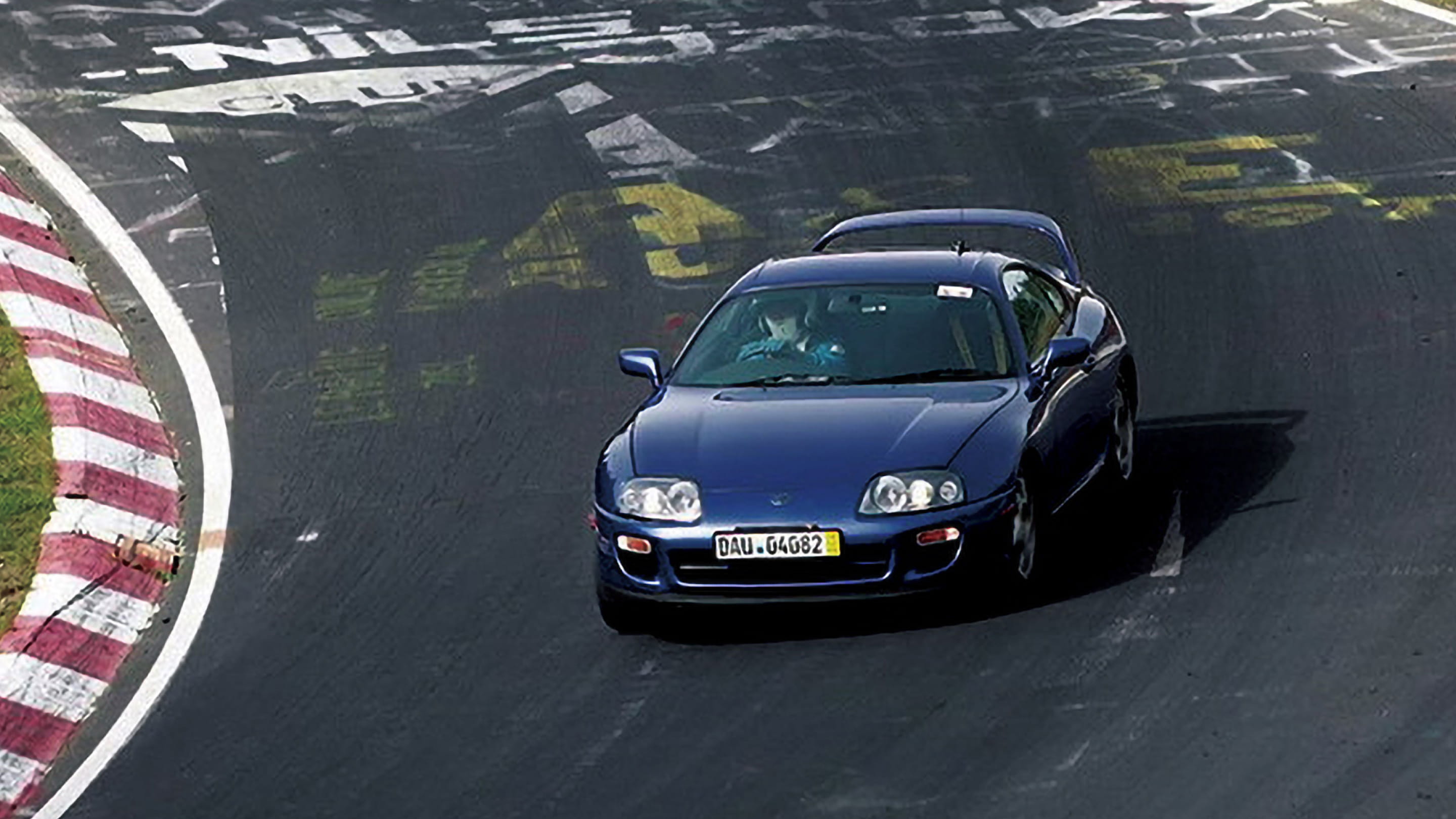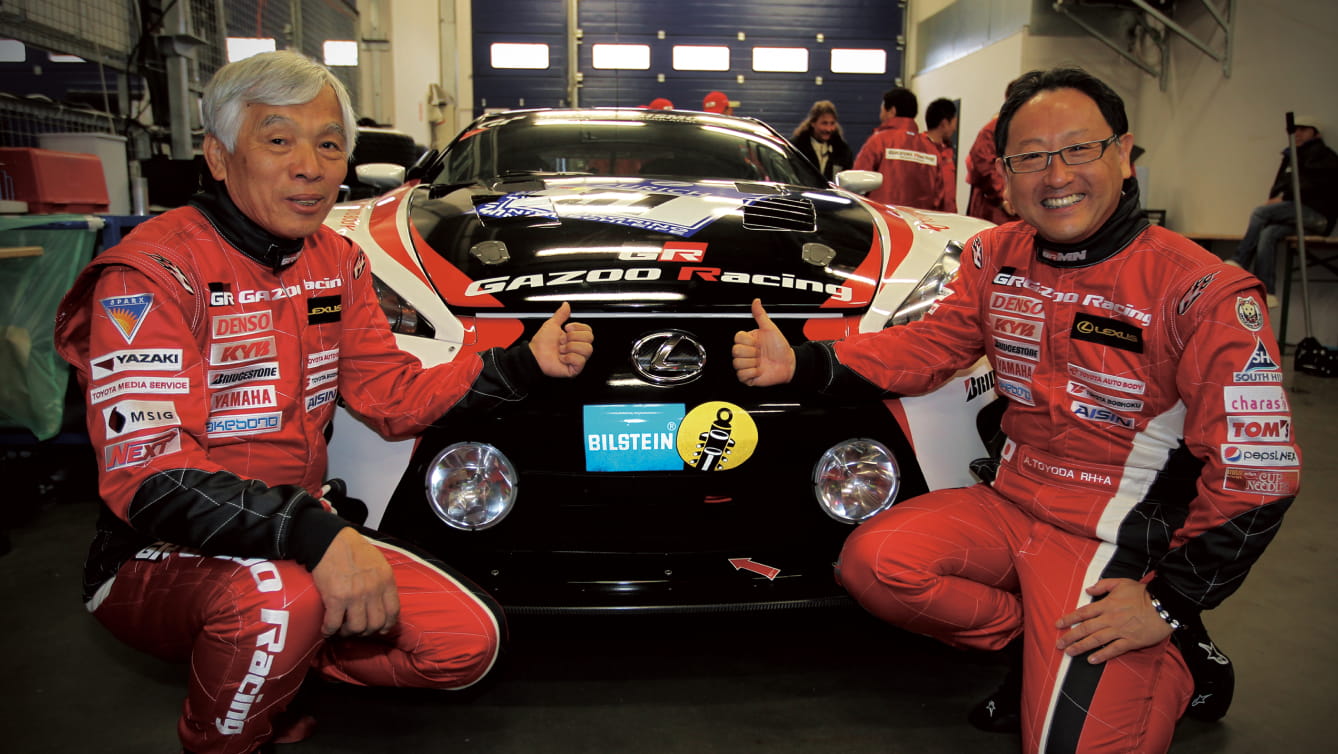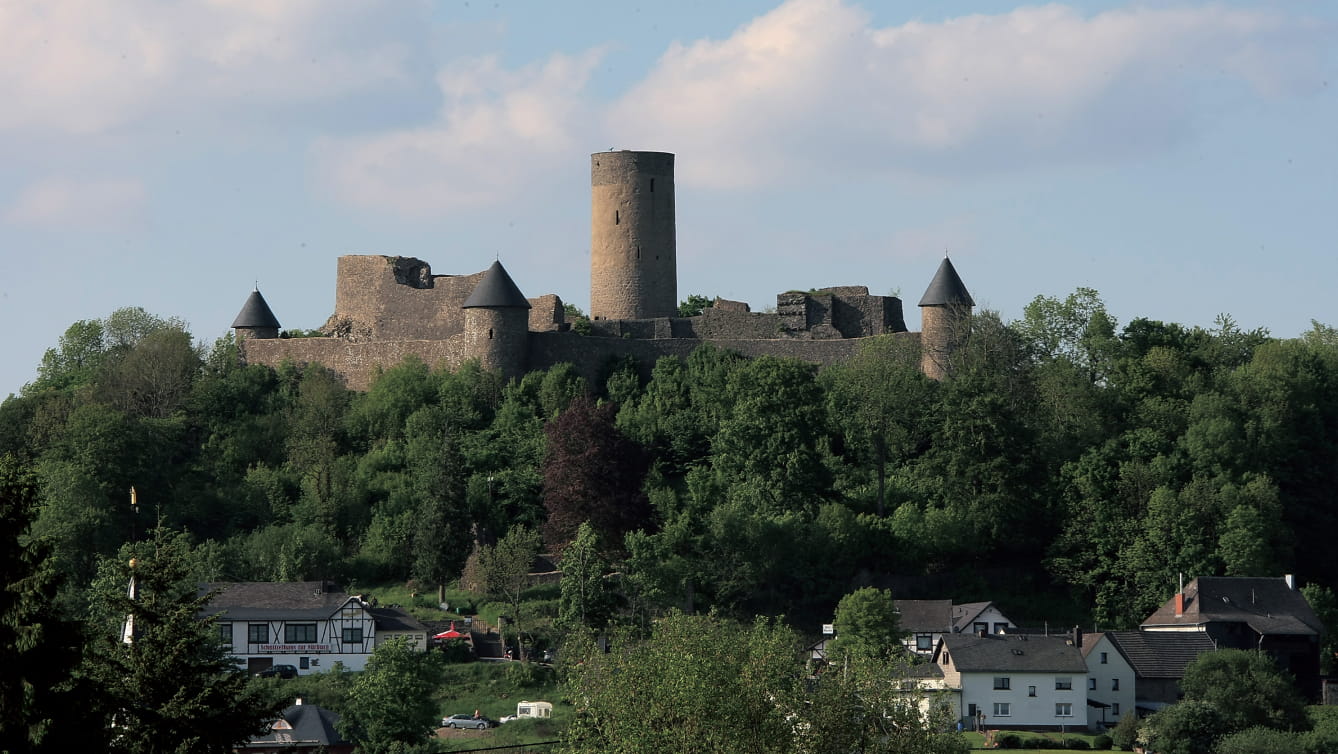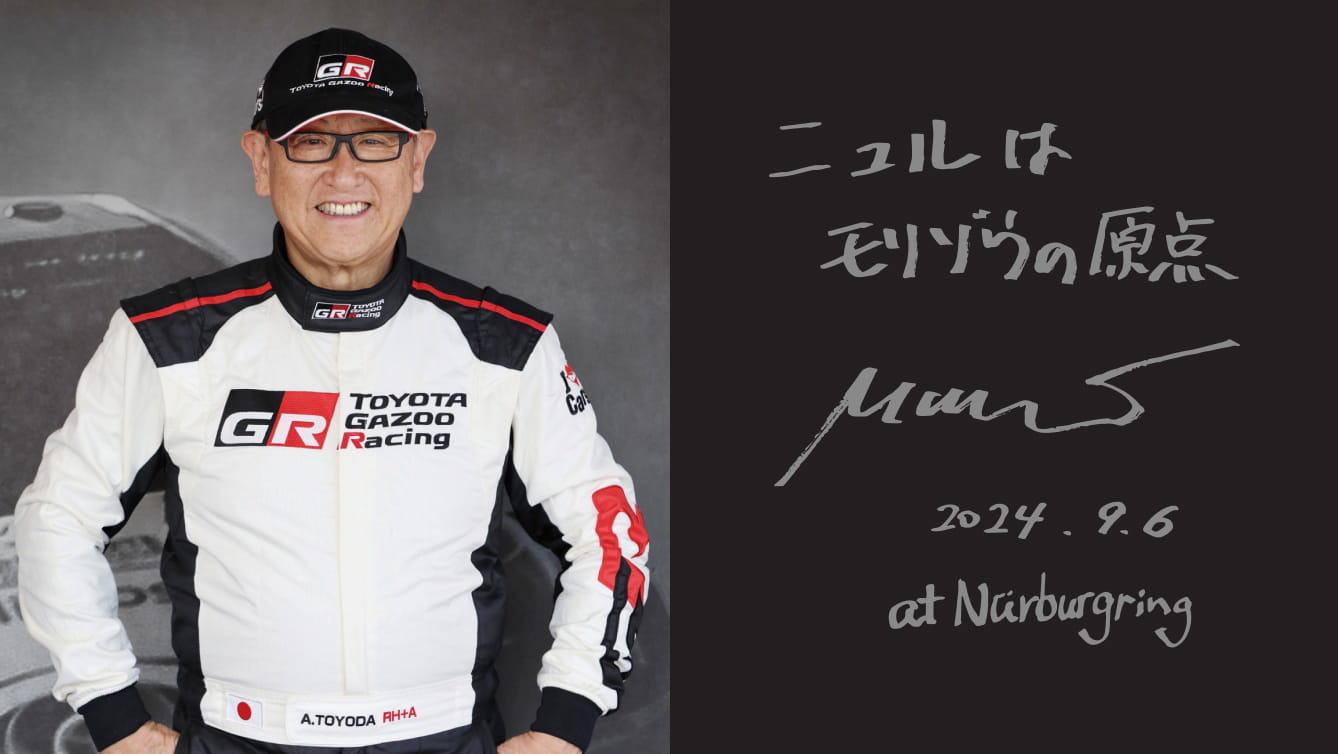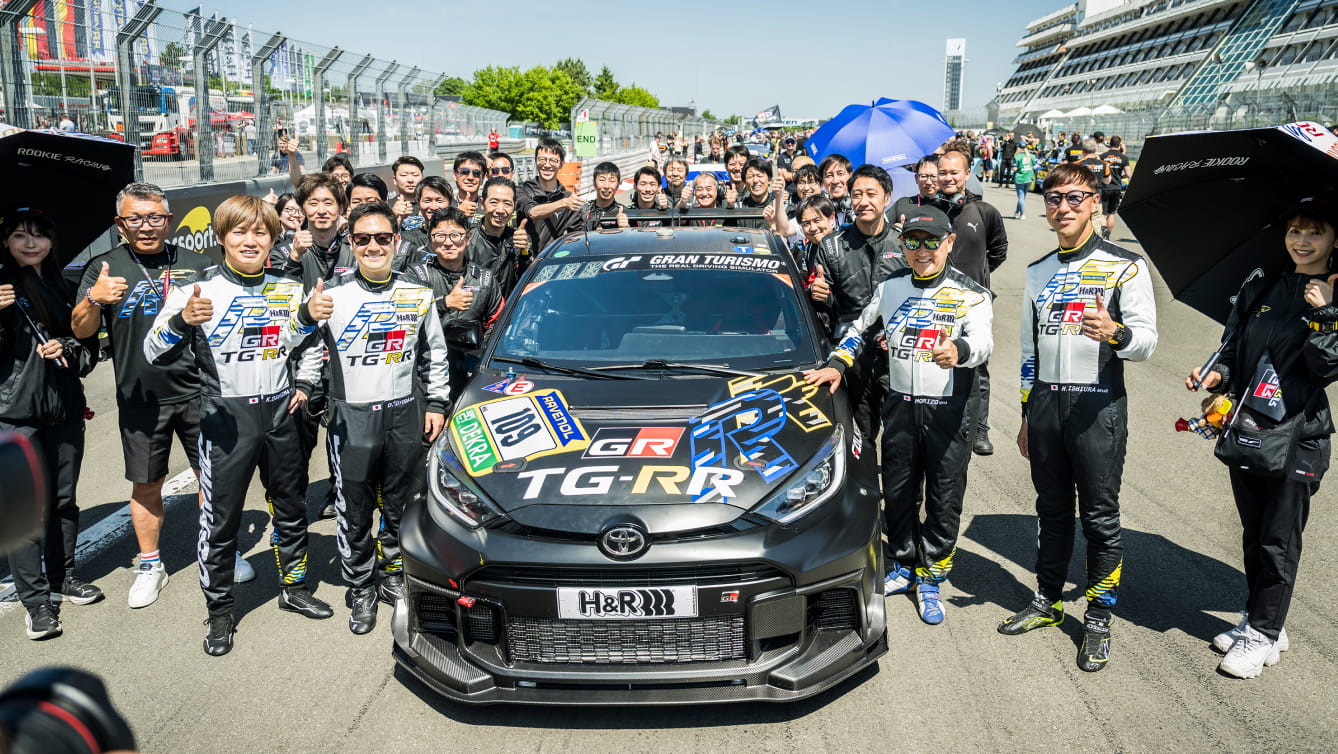Before
The frustration of having to run a Supra model that was no longer in production

The fourth-generation Supra, which was launched in 1993, was developed using Nürburgring. Even after production was discontinued in 2002, it continued to see heavy use as a training car within Toyota due to its exceptional features. Even now, although its numbers have dwindled, it is still in use. Chairman Akio Toyoda is one of the people who learned the ropes with the Supra, but even then, he was frustrated that Toyota had no model that it could release as a replacement for the Supra. Naruse, understanding this feeling, made a suggestion to Akio: “Why not race in the 24 Hours of Nürburgring?” Thus began three years of grueling training.
2007
The journey of automotive seasoning begins

The first time the team took on the 24 Hours of Nürburgring, it was not as an official Toyota project, but as a source of content for the GAZOO.com internet site. The goal was to convey the appeal and fun of cars. Instead of relying on an existing racing team, everything was done by members of Toyota. The team was led by a young Morizo and technical members, including master test driver Hiromu Naruse. Used ALTEZZA RS200s were fitted out as racecars and, through the extreme conditions of the race, the team took their first small step, learning about how to engage in dialog with their cars.
2008
Start of participation in the race with an eye toward development

In the first year, the primary goal was for Toyota to field a team all on its own, but in the second year, the objective was the exploration of automotive seasoning. A great deal of attention was focused on taking part in the 24 Hours of Nürburgring to develop the LFA, but GAZOO Racing, led by a desire to explore what it means to be a good car, performed parts replacement and setup on production vehicles (the UK six-speed manual transmission Lexus IS250) and took part in the fourth round of the Nürburgring endurance series (VLN4). This was the year in which vehicle development through the race, including the development of the LF-A, began in earnest.
2009
Leveraging the previous year’s experience, the team takes part with two vehicles

The GAZOO Racing activities and the LF-A development testing, which had been performed separately in the previous year, were linked in 2009, further ramping up vehicle development through racing. The matte black and white LF-A was improved based on the findings of 2008. This two vehicle approach enabled the team to collect even more information, and test drivers such as Morizo and Hiromu Naruse also took part. Each vehicle encountered problems, and one had to drop out of the race, but the other made it through the whole 24 hour period, providing findings and data which could be applied to mass production.
2010
First class win and engine replacement

The LFA, which had undergone two years of development testing through the 24 Hours in Nürburgring, was officially released in the fall of 2009. In 2010, the team took part again, aiming to reach even greater heights. The two LFA cars were modified mass-production vehicles, but they achieved speeds that kept them shoulder-to-shoulder with full-fledged racecars in the qualifying race. In the final race, one of the cars, despite encountering some minor problems, kept up a steady pace and led GAZOO Racing to its first class win. The other suffered engine problems that would normally cause a car to drop out of the race, but the team replaced the engine and put it back in. This experience helped further refine the members of the team.
2011
Car receives the “Blue Flash” designation for fast vehicles

Although the team’s stance toward the 24 Hours of Nürburgring remained the same, which was to focus on development testing—tempering man and machines— instead of focusing on winning or losing, from this year the team set its sights higher. It entered two LFAs, and this year, it was dedicated to speed. Both vehicles were among the top placers in the qualifying race, winning, for the first time ever, the “Blue Flash” identifying lights granted to only the fastest cars in the 24 Hours of Nürburgring. However, the finals did not go as well as the qualifying race, and both cars experienced severe problems. Nonetheless, the mechanics did their utmost and were able to return the cars to the course, where they were able to complete the race.
2012
Start of racing with both the LFA and the 86

Due to the conviction that sports cars need to have their mettle tested at Nürburgring, the development testing under extreme conditions that had been carried out with the LFA were carried on with the 86 rear-wheel drive sports car. In 2012, the team raced with three vehicles: one LFA and two 86s. The LFA’s weight was reduced and its aerodynamics were revised to give it better ride quality. The 86 was competing in the race for the first time, so its modifications from the production vehicle specifications were kept minimal and the two vehicles were set up separately to gather various data and findings that could be reflected in mass-production vehicle development. Both the LFA and the 86 performed admirably, taking class wins.
2013
Poor weather and issues that go beyond speed

In 2013, the team again raced with one LFA and two 86s. The LFA secured a class win in the previous year’s race, so this year it aimed for performance equivalent to a G3 machine. The 86 also had its weight reduced and its engine refined in the pursuit of greater speed. However, one of the 86s crashed during the qualifying race. The damage to its front was severe and irreparable, so it dropped out of the race. Due to heavy rain and fog, other team’s vehicles also experienced numerous crashes, and the race was called off after roughly nine hours. Although the speediness of the vehicles was confirmed, the peakiness of the handling was an issue, highlighting the importance of balance in making ever-better cars.
